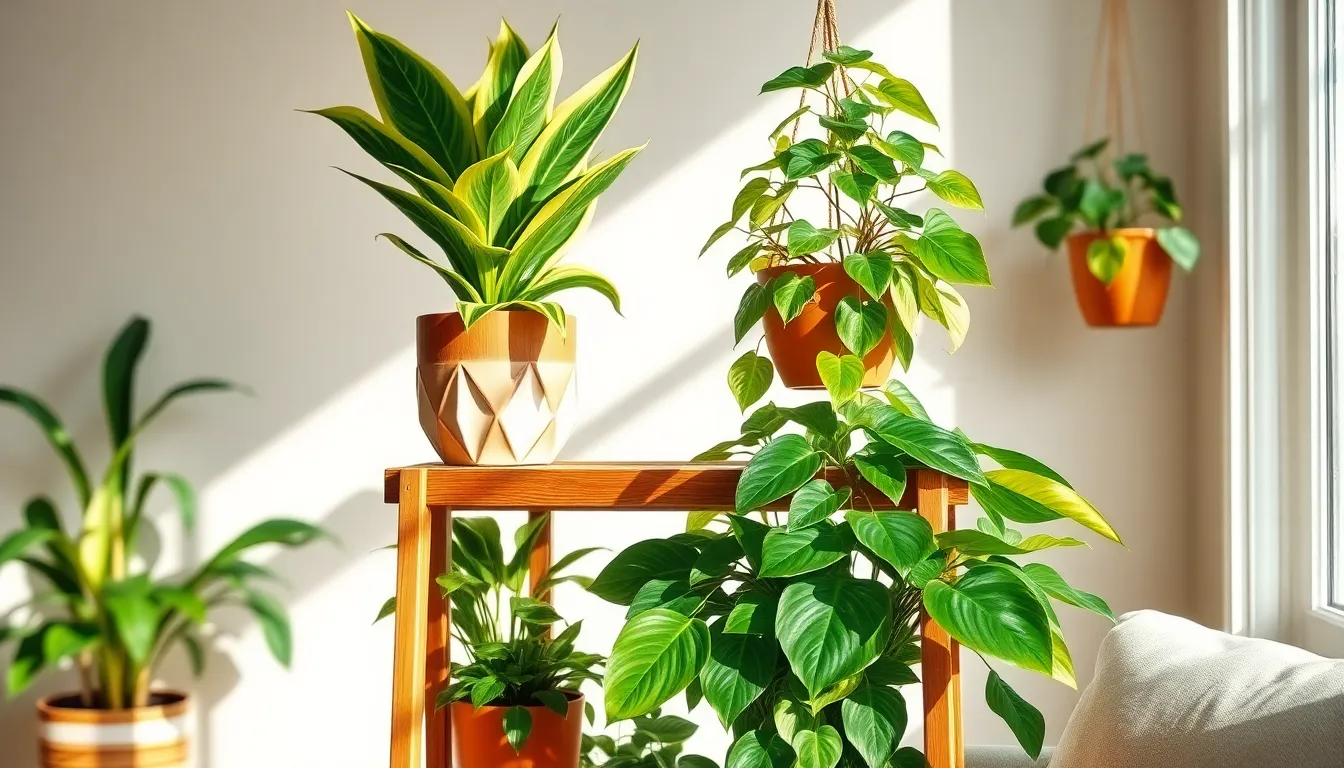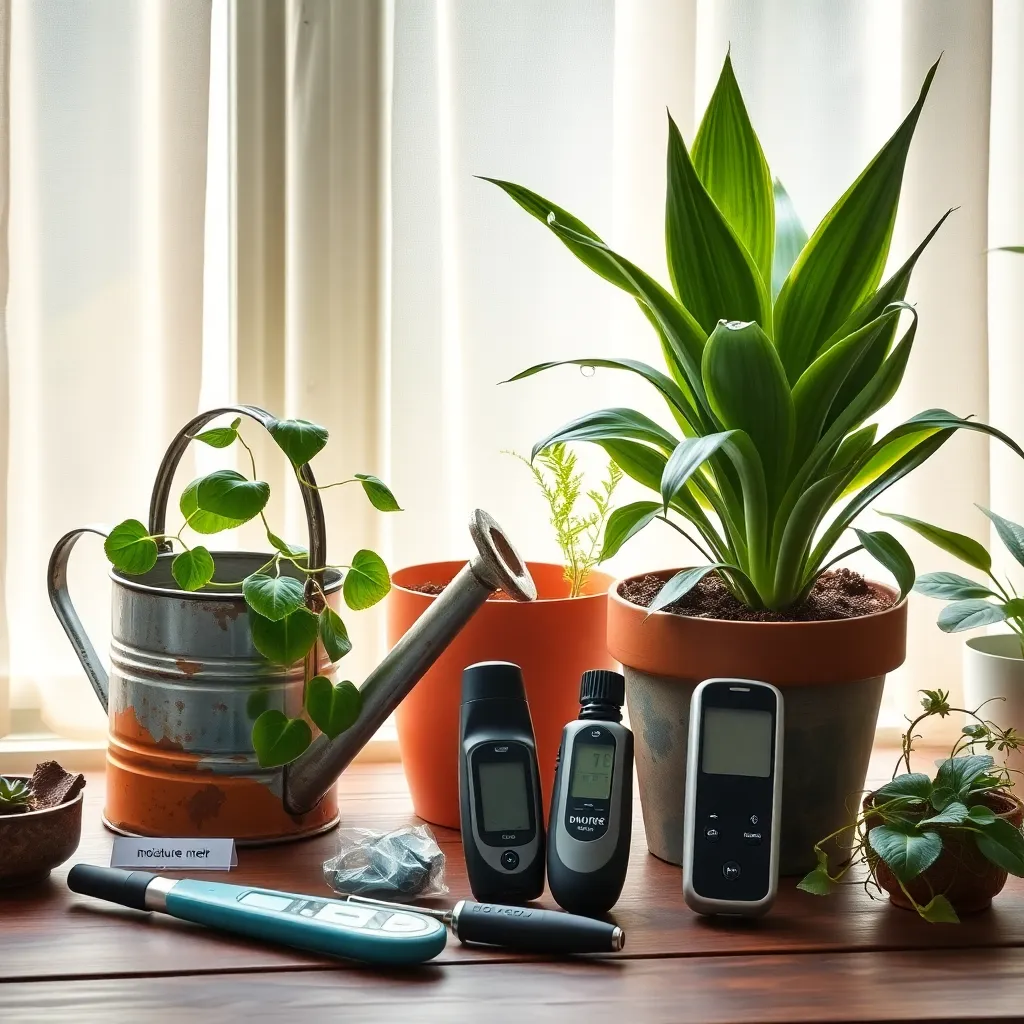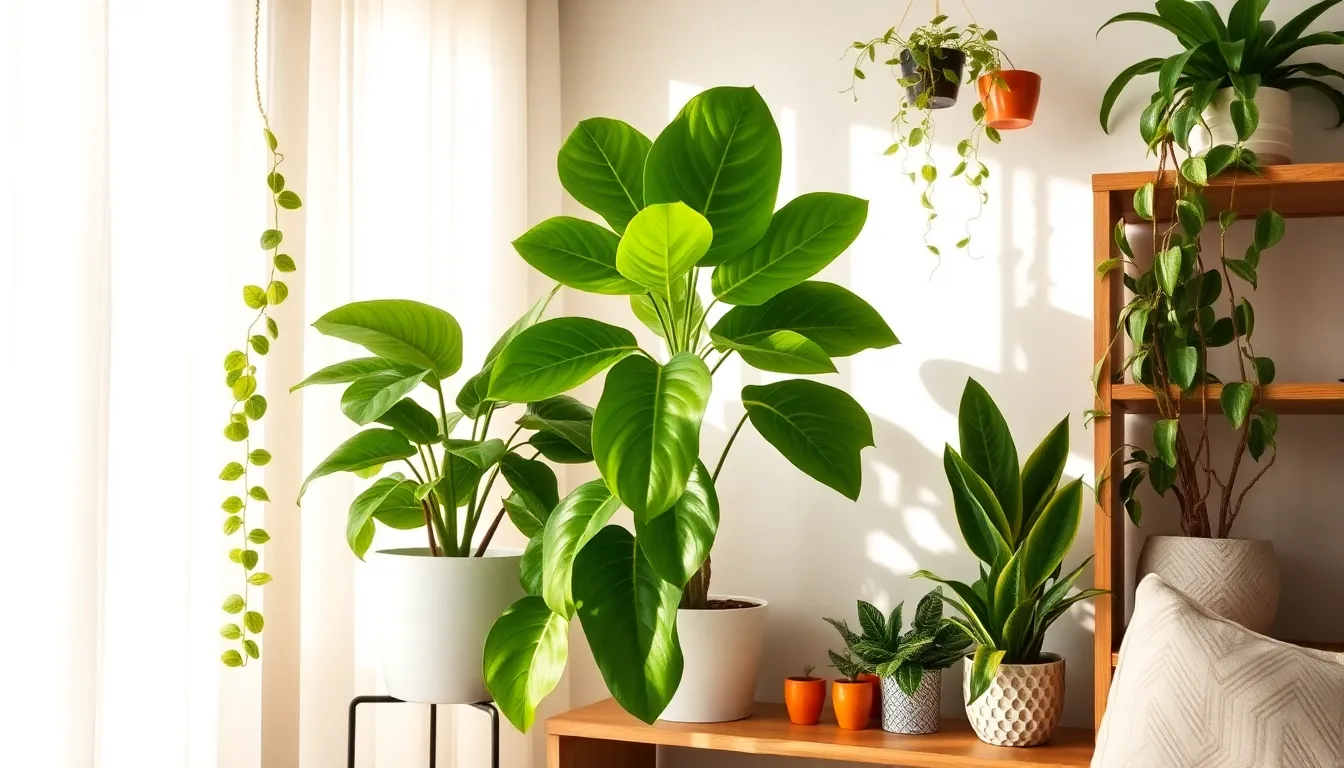Welcome to the verdant world of indoor gardening, where the joy of nurturing plants can flourish within the comfort of your own home. Whether you’re a budding green thumb or a seasoned plant parent seeking to expand your indoor oasis, “10 Best Houseplants for Beginners” is your gateway to cultivating a thriving indoor garden with ease and confidence.
Our curated list is a treasure trove for anyone eager to experience the myriad benefits of houseplants—improved air quality, a serene environment, and the sheer delight of watching your leafy companions grow. Each plant has been carefully selected for its resilience and charm, ensuring that success and satisfaction are within your reach regardless of your gardening experience. Dive into this guide and discover how these beginner-friendly beauties can transform your home into a living sanctuary, while boosting your gardening prowess with every new leaf unfurled.
Spider Plant (Chlorophytum comosum)
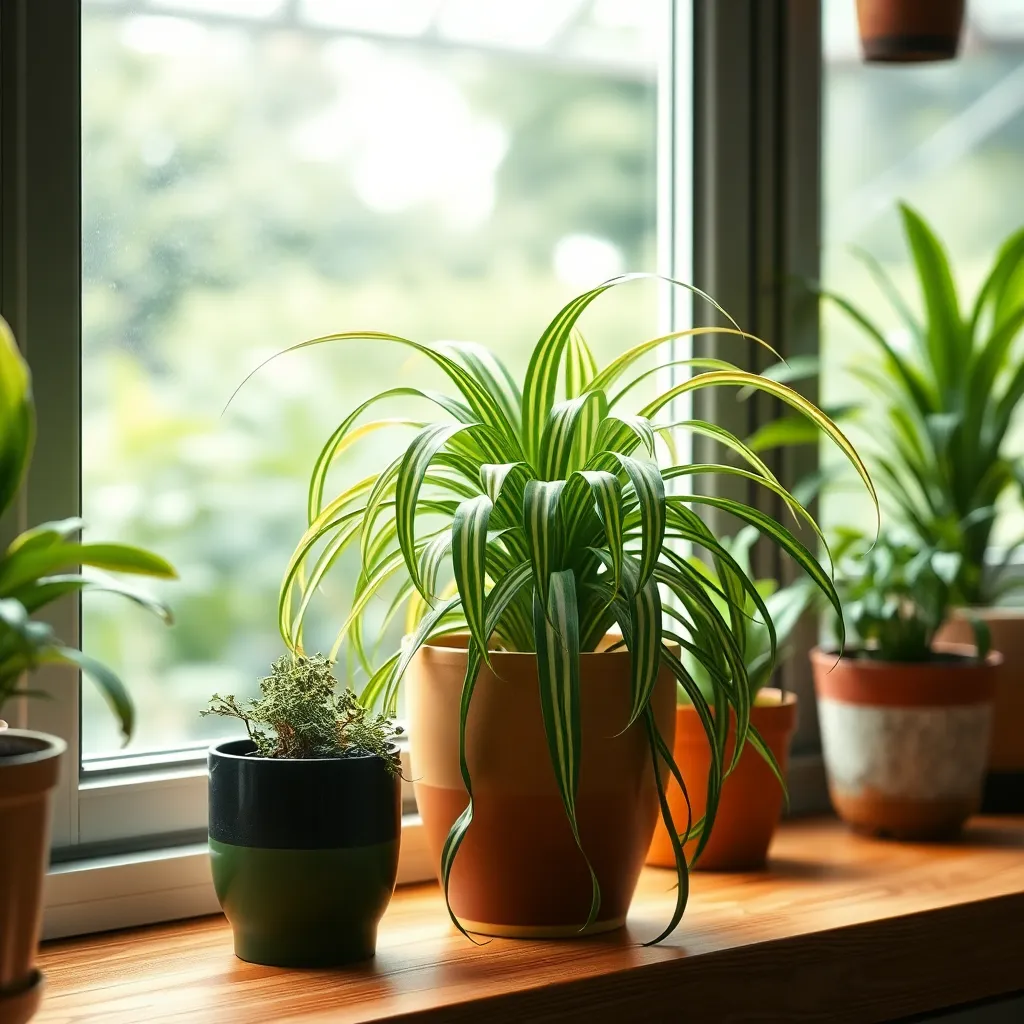
The Spider Plant, known scientifically as Chlorophytum comosum, is a fantastic choice for beginner gardeners due to its resilience and air-purifying qualities. This plant thrives in a variety of conditions, making it adaptable to almost any home environment.
When it comes to care, Spider Plants prefer bright, indirect light but can also tolerate lower light levels. Watering should be done moderately, allowing the top inch of soil to dry out before watering again to prevent root rot.
For optimal growth, use a well-draining potting mix that retains some moisture, such as a combination of peat and perlite. Repotting every couple of years can help accommodate its rapid growth, especially if you notice roots starting to spiral at the bottom of the pot.
Advanced gardeners might enjoy propagating Spider Plants through their “pups” or offshoots, which can be easily rooted in water or soil. This not only expands your plant collection but also provides an opportunity to share this lovely plant with friends and family.
Peace Lily (Spathiphyllum spp.)
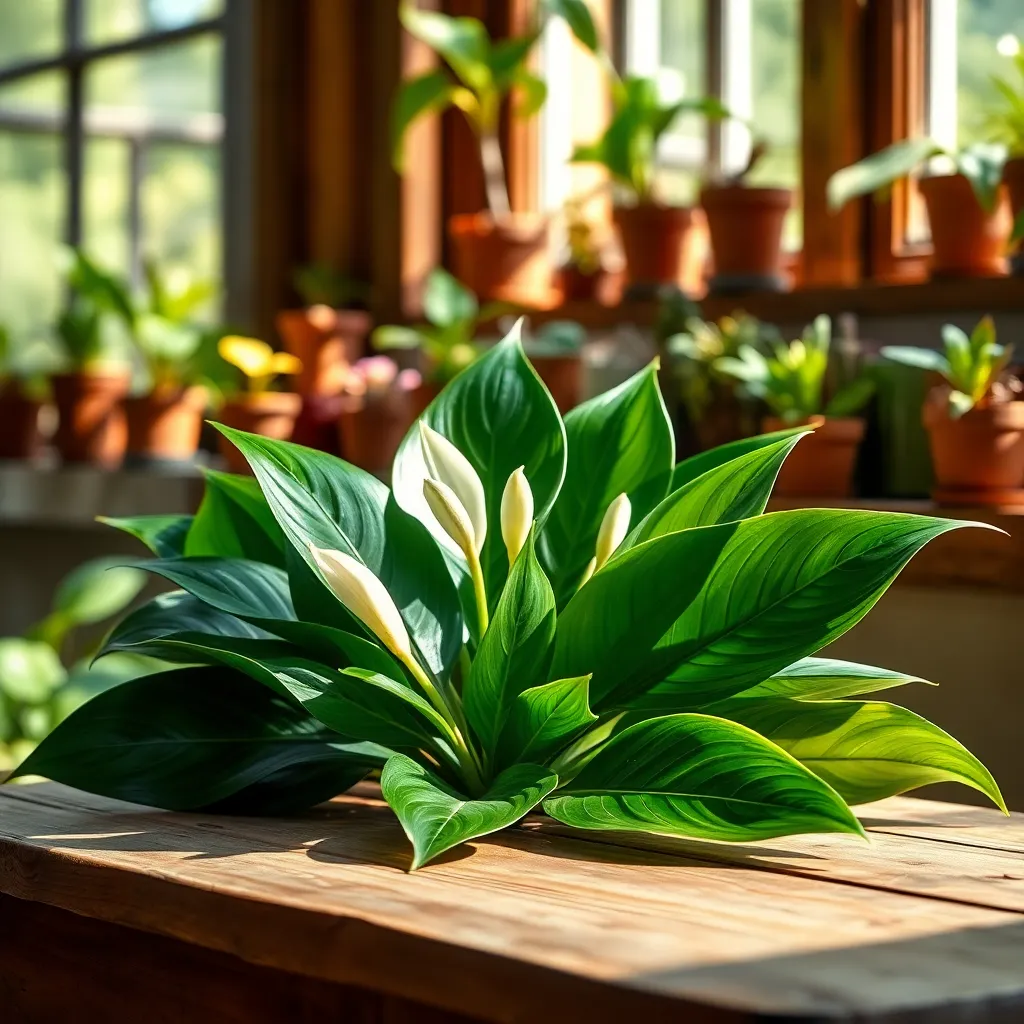
Peace Lily, or Spathiphyllum spp., is a top choice for beginners due to its low maintenance and lush green foliage. This plant thrives in low to medium light conditions, making it perfect for indoor spaces with limited natural light.
Ensure your Peace Lily’s soil is well-draining yet retains some moisture; a mix of peat moss and perlite works well. Water the plant when the top inch of soil feels dry, but be cautious of overwatering, as this can lead to root rot.
To encourage blooms, provide your Peace Lily with a balanced liquid fertilizer every six to eight weeks during the growing season. Additionally, wiping the leaves with a damp cloth occasionally will keep them dust-free and improve their ability to photosynthesize.
Advanced care tip: If you notice brown tips on the leaves, it might indicate fluoride sensitivity from tap water. To prevent this, use distilled or rainwater for watering your plant.
Aloe Vera (Aloe barbadensis miller)
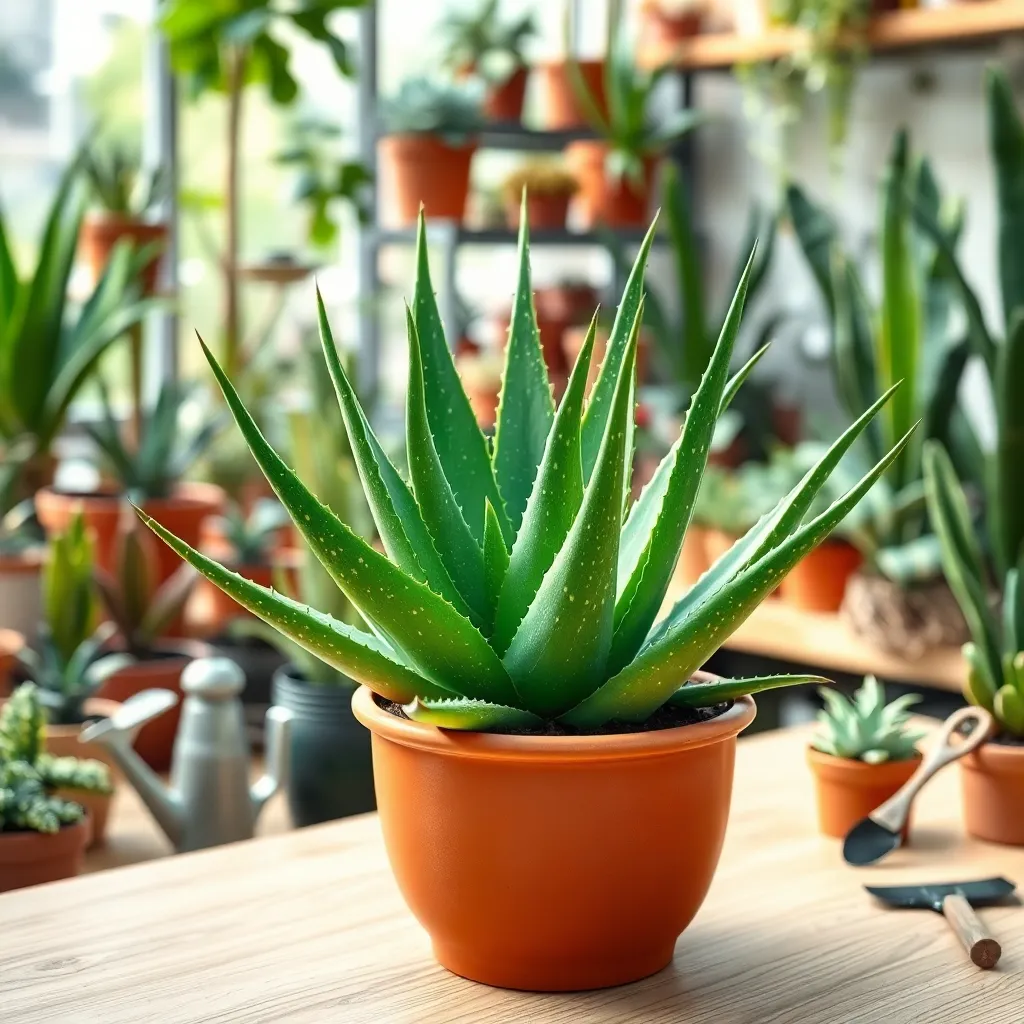
Aloe Vera, known scientifically as Aloe barbadensis miller, is a superb choice for beginner gardeners looking to add a low-maintenance yet highly beneficial plant to their collection. This succulent thrives in bright, indirect sunlight and prefers to dry out completely between waterings, making it ideal for those who might forget to water regularly.
When it comes to soil, Aloe Vera requires a well-draining mix; a cactus or succulent potting mix is perfect. You can create your own by blending equal parts sand, perlite, and regular potting soil, which ensures ample drainage and aeration.
While Aloe Vera is extremely resilient, it’s important to avoid overwatering, which is a common mistake. Water sparingly, about every two to three weeks, and reduce frequency even further during the winter months when the plant is dormant.
For those looking to propagate, Aloe Vera can easily be multiplied through its offshoots, or “pups,” that grow at the base. Simply remove these pups and plant them in their own pots using the same well-draining soil mixture, ensuring they have a few days to dry and callous over before watering.
Philodendron (Philodendron hederaceum)
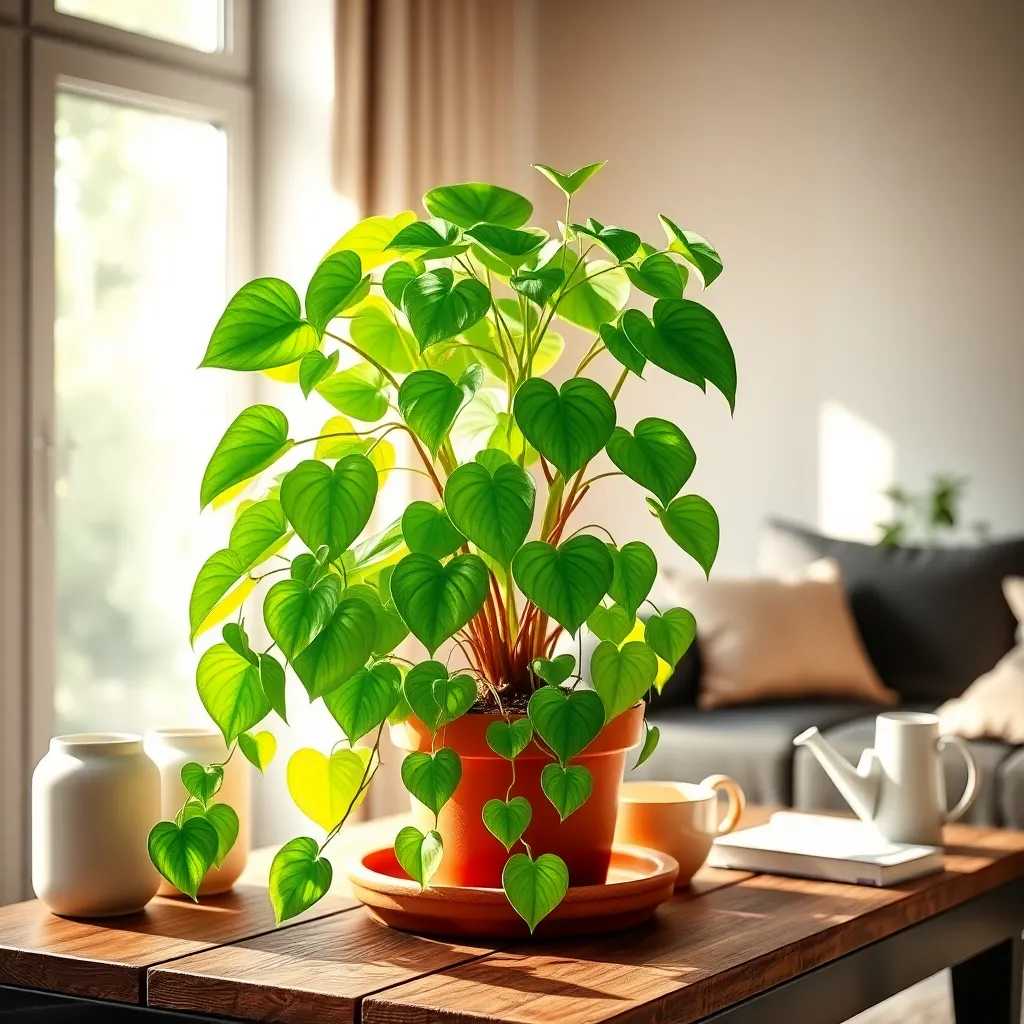
Philodendron hederaceum, often known as the heartleaf philodendron, is a resilient and attractive houseplant perfect for beginners. This plant thrives in a variety of indoor conditions, making it an excellent choice for those new to plant care.
To keep your philodendron healthy, place it in a spot with bright, indirect light, though it can tolerate low light conditions. Ensure the soil remains slightly moist by watering when the top inch feels dry to the touch.
Using a well-draining potting mix is crucial for preventing root rot, which philodendrons are prone to if overwatered. A combination of peat-based soil with perlite or orchid bark works well to maintain the right moisture levels.
Fertilize your philodendron every month during the growing season with a balanced liquid fertilizer, diluted to half strength. In winter, reduce feeding as the plant’s growth naturally slows down.
Advanced hobbyists can encourage fuller growth by occasionally pruning the plant, which promotes bushier foliage. Regularly check for pests like aphids or spider mites, especially if the plant is kept in a particularly humid environment.
Rubber Plant (Ficus elastica)
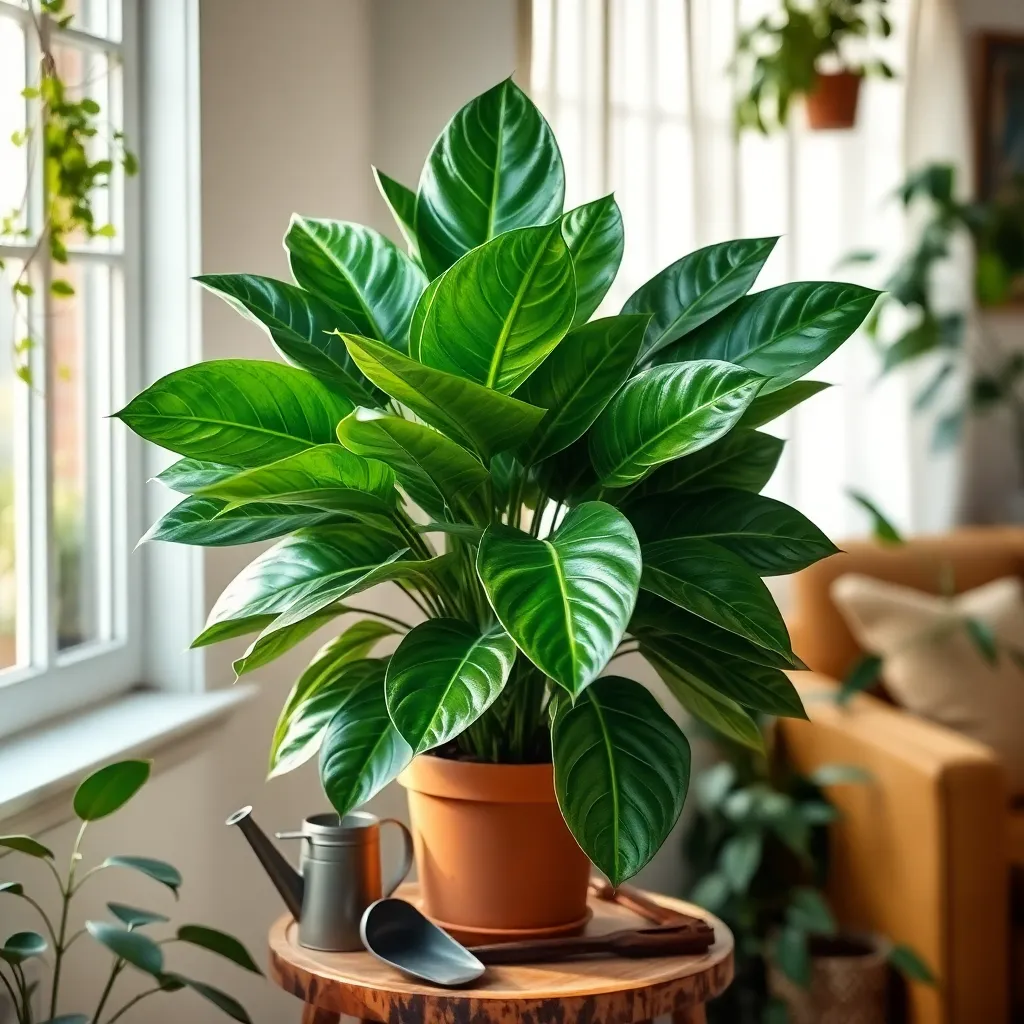
Rubber plants, known scientifically as Ficus elastica, are perfect for beginners due to their resilience and adaptability. They thrive in bright, indirect light but can tolerate lower light conditions, making them versatile for various home environments.
Ensuring proper watering is key to their health; water your rubber plant when the top inch of soil feels dry. Overwatering can lead to root rot, so it’s crucial to use a well-draining potting mix, such as a blend of peat, pine bark, and perlite.
To encourage growth and maintain a lush appearance, consider feeding your rubber plant with a balanced liquid fertilizer every month during the growing season. Pruning is simple: trim back any leggy growth to promote a fuller plant and remove any yellowing leaves to keep it healthy.
For advanced care, wipe the leaves with a damp cloth periodically to remove dust and allow the plant to breathe better. If you notice your rubber plant becoming too tall, propagate it through stem cuttings to create new plants that can be shared or kept.
Dracaena (Dracaena marginata)

The Dracaena marginata, commonly known as the Dragon Tree, is a striking houseplant that thrives with minimal care. Its tall, slender stems topped with spiky leaves make it a perfect choice for adding vertical interest to any space.
For best results, place your Dracaena in a spot with bright, indirect light, although it can tolerate lower light conditions. Water it sparingly, allowing the top inch of soil to dry out between waterings, as overwatering can lead to root rot.
Utilize a well-draining potting mix, such as one formulated for cacti or succulents, to ensure proper aeration. Repotting every two to three years is recommended to refresh the soil and provide the plant with additional room to grow.
To keep the leaves dust-free and vibrant, gently wipe them with a damp cloth every few weeks. If you’re looking to boost growth, consider feeding your Dracaena with a balanced liquid fertilizer diluted to half strength during the growing season.
Chinese Evergreen (Aglaonema commutatum)
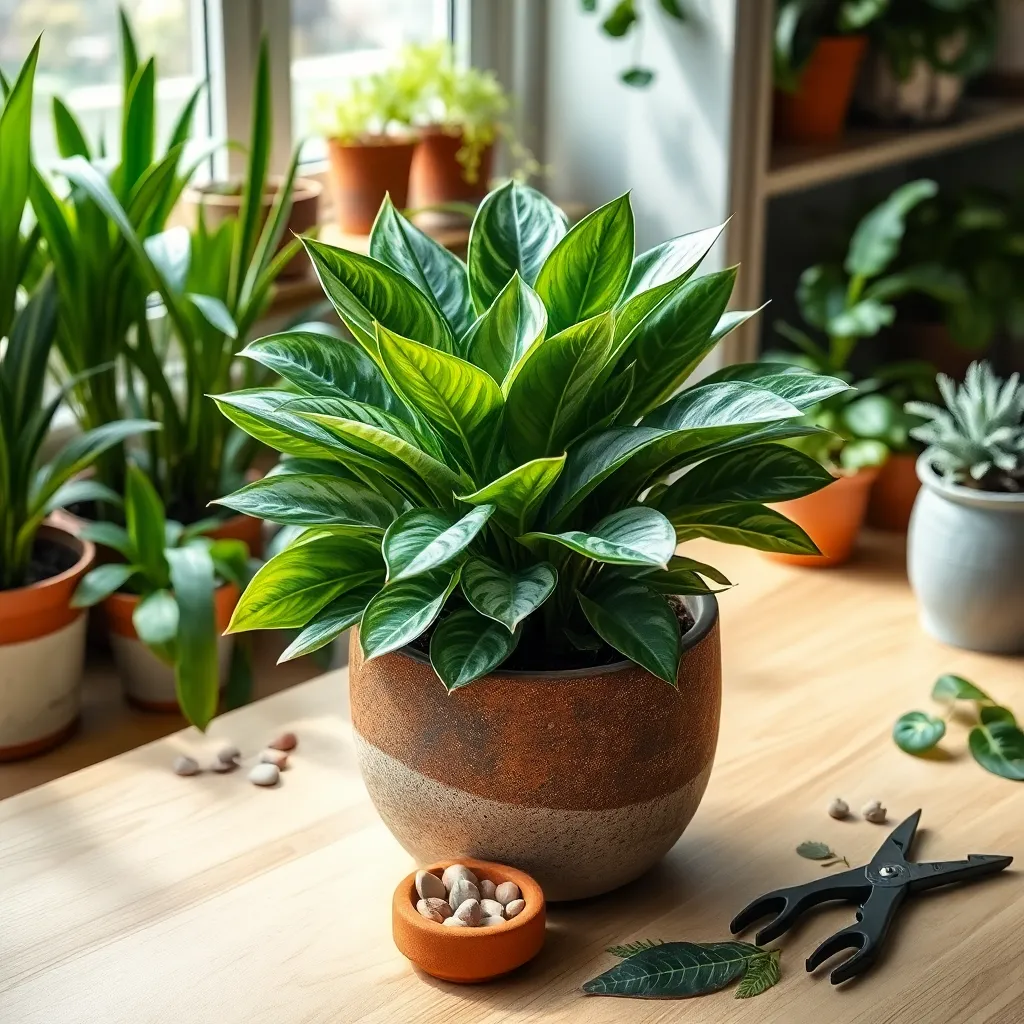
Chinese Evergreen (Aglaonema commutatum) is a fantastic choice for beginner gardeners due to its low-maintenance nature. This plant thrives in a variety of conditions, making it adaptable and forgiving, even if you miss a watering or two.
To care for your Chinese Evergreen, place it in bright, indirect light, although it can tolerate low light as well. It’s best to water the plant when the top inch of soil feels dry to the touch, ensuring you never let it sit in water to avoid root rot.
Soil choice is crucial for the health of your Aglaonema, so opt for a well-draining potting mix with peat and perlite. This helps maintain the right balance of moisture and aeration, promoting healthy root growth.
For more advanced care, consider fertilizing every couple of months during the growing season with a balanced, water-soluble fertilizer. This can boost growth and enhance the vibrant foliage, giving you a lush and healthy plant.
Jade Plant (Crassula ovata)
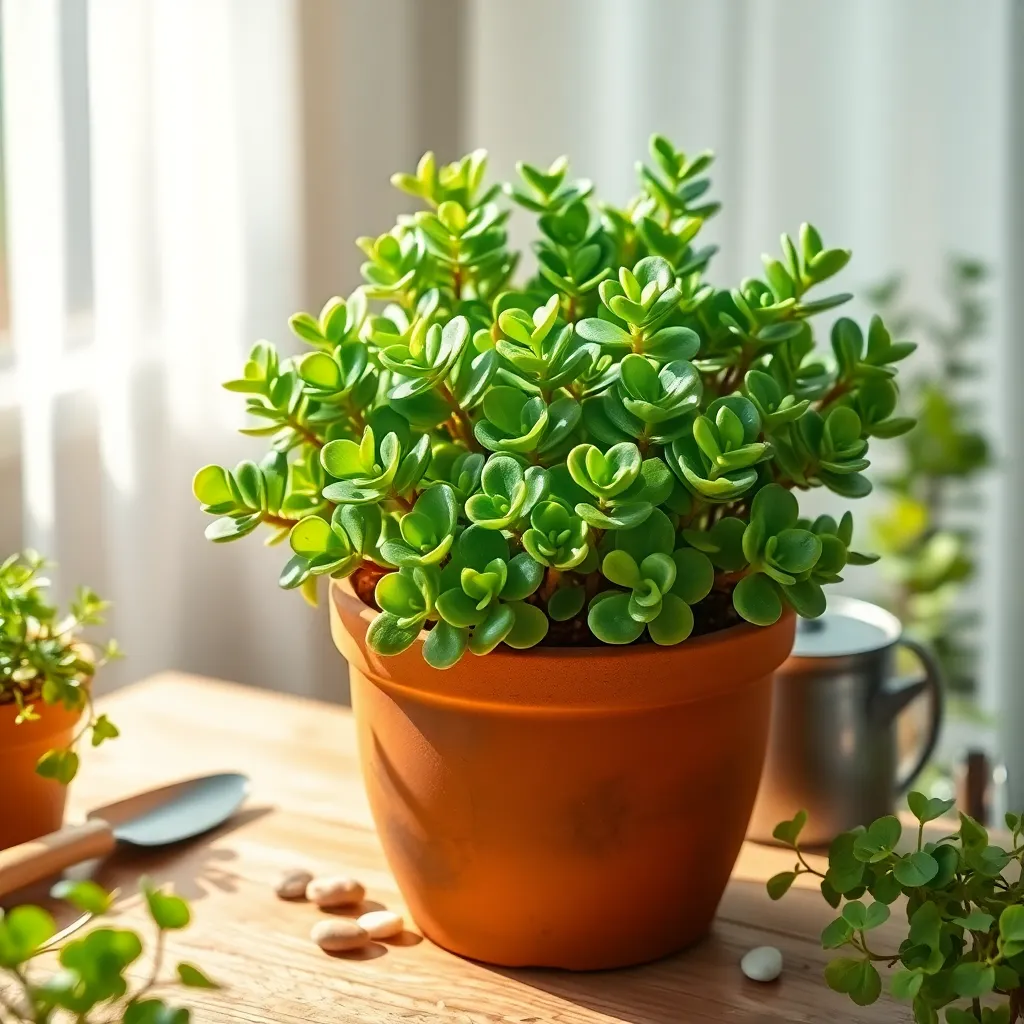
The Jade Plant, or Crassula ovata, is a popular choice for beginners due to its striking appearance and low-maintenance nature. This succulent is known for its thick, fleshy leaves and can thrive with minimal care, making it ideal for those new to houseplants.
To ensure a healthy Jade Plant, place it in a spot with bright, indirect sunlight; a south or west-facing window is ideal. These plants prefer a well-draining potting mix, such as a cactus or succulent blend, to prevent root rot.
Water your Jade Plant sparingly, allowing the soil to dry out completely between waterings. Overwatering is a common mistake, so it’s crucial to wait until the top inch of soil is dry before adding more water.
As the Jade Plant grows, it can be easily propagated from leaf or stem cuttings, offering a fun project for gardeners. Simply let the cuttings dry for a few days to form a callous, then plant them in the same well-draining soil used for established plants.
Boston Fern (Nephrolepis exaltata)

The Boston Fern (Nephrolepis exaltata) is a delightful addition to any home, favored for its lush, arching fronds. This plant thrives in indirect light, making it perfect for rooms that receive filtered sunlight throughout the day.
Maintaining the right humidity is crucial for Boston Ferns, as they are native to tropical regions. To keep your fern thriving, consider misting it regularly or placing it on a tray filled with pebbles and water to increase ambient moisture.
When it comes to watering, aim to keep the soil evenly moist, but be cautious of waterlogged conditions which can lead to root rot. A basic guideline is to check the top inch of soil; if it feels dry, it’s time to water your fern.
For those looking to optimize growth, use a well-draining potting mix rich in organic matter. Applying a balanced liquid fertilizer monthly during the growing season will help support vibrant, lush foliage.
Parlor Palm (Chamaedorea elegans)
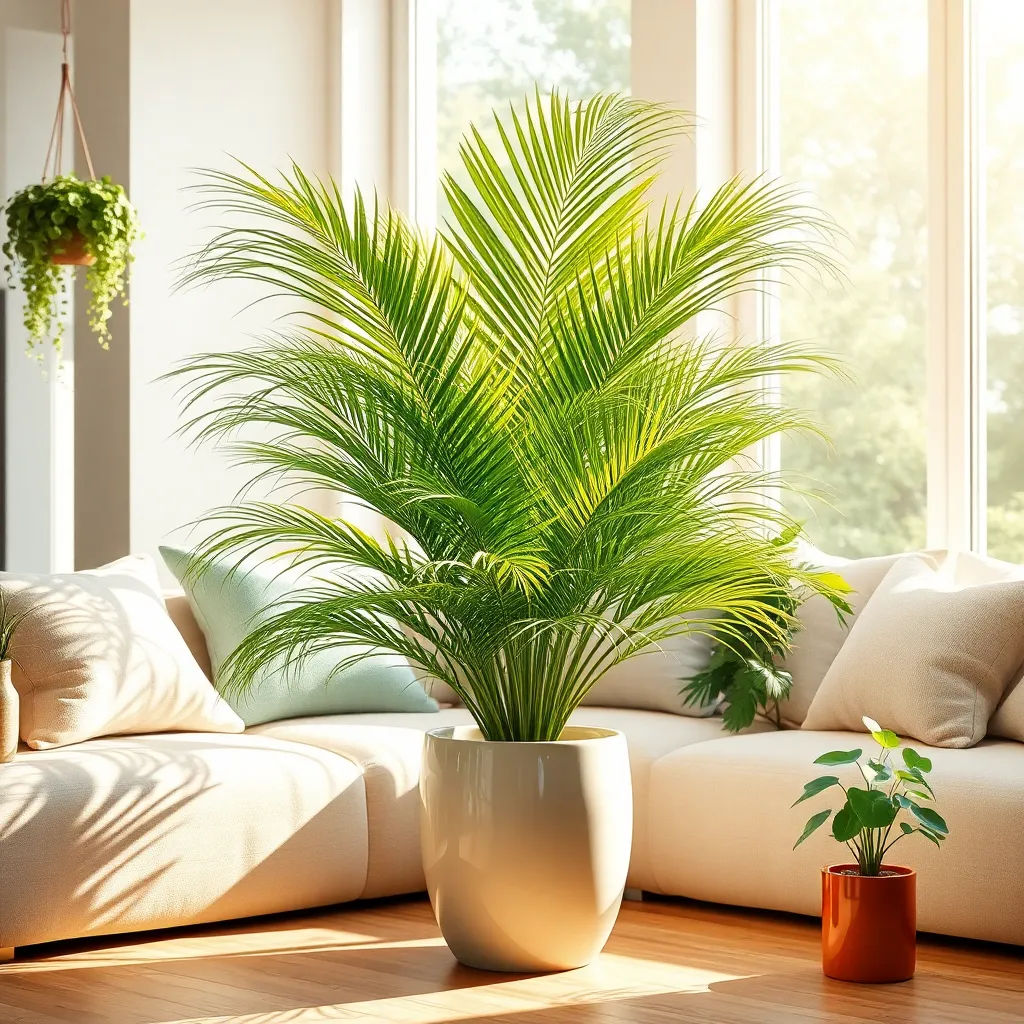
The Parlor Palm (Chamaedorea elegans) is a delightful choice for beginner gardeners due to its low-maintenance nature and adaptability to indoor conditions. This plant thrives in indirect light, making it perfect for homes with limited natural sunlight.
When it comes to watering, Parlor Palms prefer a consistent but moderate routine. Allow the top inch of soil to dry out before watering again, as overwatering can lead to root rot.
For best results, use a well-draining potting mix composed of peat-based soil. Adding a small amount of perlite can enhance drainage and prevent waterlogging, which is beneficial for the plant’s health.
Although Parlor Palms do not require frequent fertilization, applying a balanced liquid fertilizer every two months during the growing season can promote lush growth. Be cautious with fertilizing during winter months, as the plant’s growth slows down and requires less nutrition.
Conclusion: Growing Success with These Plants
In exploring the ’10 Best Houseplants for Beginners,’ we’ve uncovered ten key relationship concepts through the nurturing lens of houseplant care: patience, understanding needs, consistency, communication, adaptability, growth together, space and boundaries, support, appreciation, and resilience. Just as plants thrive with these attentions, so too do our relationships blossom when we apply these principles.
As an immediate step, why not choose a plant from the list and begin your journey of growth? Let it serve as a daily reminder of the nurturing care that relationships require.
Remember, relationships, like houseplants, are living entities that flourish with ongoing attention and love. Bookmark this article to revisit these concepts whenever you need a refresh on nurturing your connections.
By integrating these insights into your everyday interactions, you’re not only cultivating a thriving home but also planting the seeds for enduring relationship success. Embrace the journey, and know that every moment of care enriches your connections, promising a future of love and growth. Save this guide as your go-to resource on your path to enriching relationships and watch them thrive.

